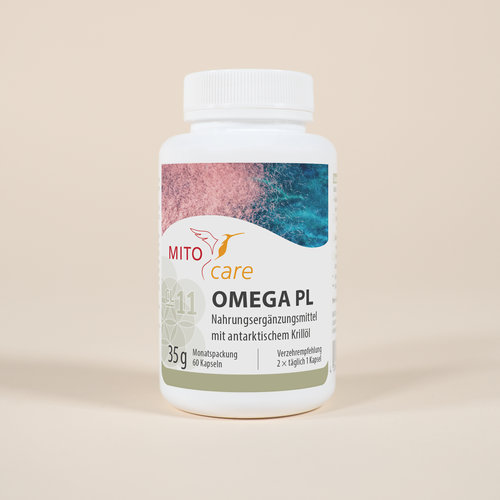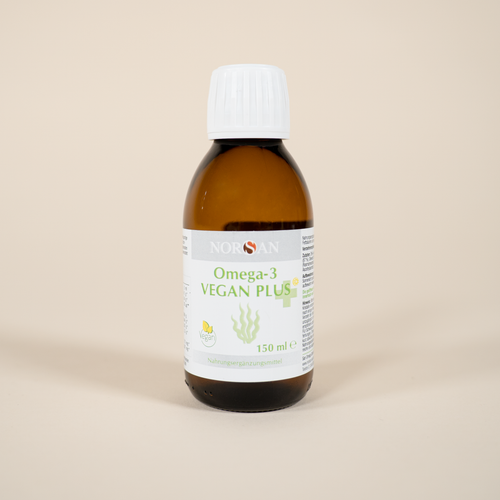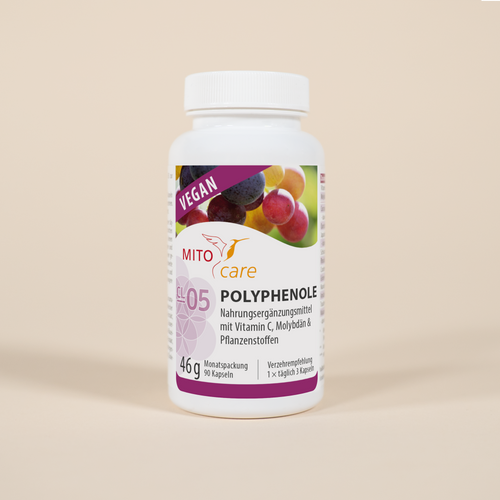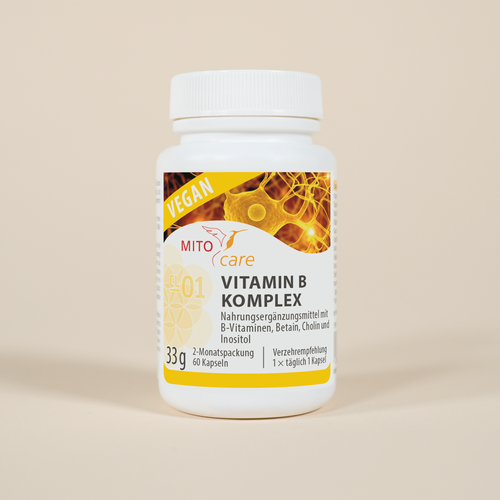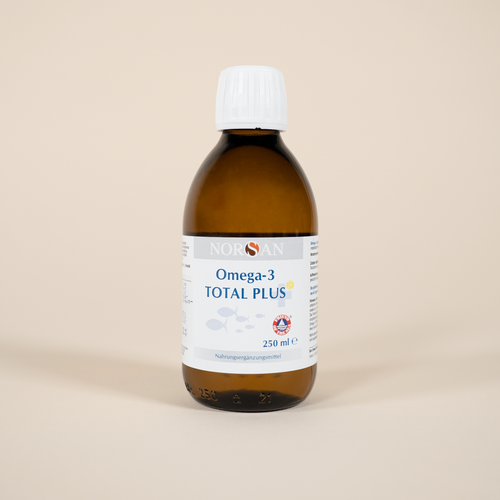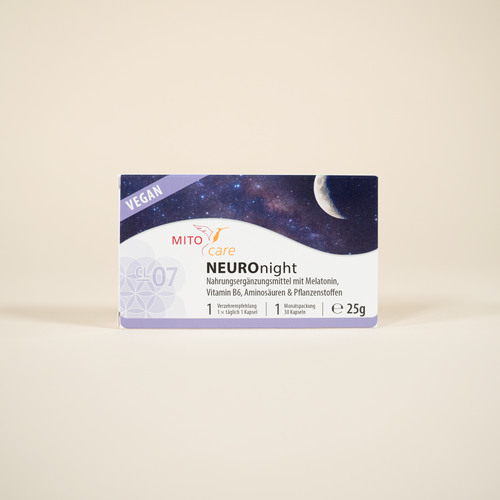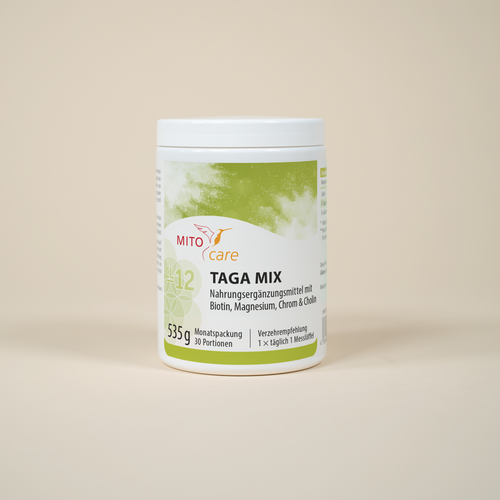Themen dieses Blogartikels:
Introduction
The blood-brain barrier - how you can protect it
Your blood-brain barrier is there to protect your brain. It is designed to prevent toxins and pathogens from entering your brain from your blood.
It is precisely this function of the barrier that can be impaired, leading to disease and unpleasant symptoms. How is this possible?
On the other hand, we want certain substances that positively affect our brain to be able to cross the blood-brain barrier - be it drugs, natural substances or amino acids.
Which substances can actually overcome the blood-brain barrier? And how is this barrier actually constructed?
It is precisely this function of the barrier that can be impaired, leading to disease and unpleasant symptoms. How is this possible?
On the other hand, we want certain substances that positively affect our brain to be able to cross the blood-brain barrier - be it drugs, natural substances or amino acids.
Which substances can actually overcome the blood-brain barrier? And how is this barrier actually constructed?
Wissen für deine Ohren!
Keine Zeit zum Lesen? Hier findest du Claires Artikel zum Anhören.
Table of Contents
• How is the blood-brain barrier constructed?
• What damages your blood-brain barrier?
• The blood-brain barrier as an obstacle for drugs and plant compounds?
• How do you keep your blood-brain barrier healthy?
• What damages your blood-brain barrier?
• The blood-brain barrier as an obstacle for drugs and plant compounds?
• How do you keep your blood-brain barrier healthy?
How is the blood-brain barrier constructed?
When you think of brain, you may immediately think of nerve cells. Did you know that nerve cells do not even participate in the blood-brain barrier? The nerve cells only have contact with the aforementioned barrier via the so-called astrocytes. What are the components of the barrier?


Endothelial cells
The endothelial cells line our blood vessel walls from the inside and control which substances are allowed into the brain's nervous system and which are not. They are so close together that they can close off the spaces between them with the help of so-called "tight junctions. The cell layer consisting of the tightly packed endothelial cells is called endothelium. "Endo" stands for inside.
Basement membrane
The endothelium is surrounded by a membrane that holds everything together - the basement membrane. It is also in exchange with the surrounding cells and thus also involved in deciding which substances are allowed into the brain and which are not.
Pericytes
The pericytes are embedded in the basement membrane. They communicate with the endothelial cells, can contract and thus control blood flow. They also exhibit macrophage activity (https://pubmed.ncbi.nlm.nih.gov/10715555/). Macrophages are scavenger cells that literally eat up pathogens.
Astrocytes
Astrocytes are located around the basement membrane. They help the endothelium defend the blood-brain barrier and contribute to the supply of nerve cells. They send out messenger substances that make the endothelium more permeable or less permeable. Via astrocytes, nerve cells have contact with the outside world and the outside world has contact with the nervous system.
The endothelial cells line our blood vessel walls from the inside and control which substances are allowed into the brain's nervous system and which are not. They are so close together that they can close off the spaces between them with the help of so-called "tight junctions. The cell layer consisting of the tightly packed endothelial cells is called endothelium. "Endo" stands for inside.
Basement membrane
The endothelium is surrounded by a membrane that holds everything together - the basement membrane. It is also in exchange with the surrounding cells and thus also involved in deciding which substances are allowed into the brain and which are not.
Pericytes
The pericytes are embedded in the basement membrane. They communicate with the endothelial cells, can contract and thus control blood flow. They also exhibit macrophage activity (https://pubmed.ncbi.nlm.nih.gov/10715555/). Macrophages are scavenger cells that literally eat up pathogens.
Astrocytes
Astrocytes are located around the basement membrane. They help the endothelium defend the blood-brain barrier and contribute to the supply of nerve cells. They send out messenger substances that make the endothelium more permeable or less permeable. Via astrocytes, nerve cells have contact with the outside world and the outside world has contact with the nervous system.
What damages your blood-brain barrier?
The substances that are important and useful for the brain can pass the blood-brain barrier. Of course, this should continue to be the case. So what are the substances that unfortunately can still pass through our blood-brain barrier even though they shouldn't? And do certain substances have negative effects on your blood-brain barrier?
Nicotine, alcohol and other drugs
Unfortunately, substances like nicotine, alcohol, and cocaine are also small enough to cross your blood-brain barrier. These substances can affect not only our brain, but even the blood-brain barrier itself. Drugs, nicotine[1] and alcohol can cause damage to it[2]. In addition, oxidative stress can occur[3], which also damages your blood-brain barrier.
Unfortunately, substances like nicotine, alcohol, and cocaine are also small enough to cross your blood-brain barrier. These substances can affect not only our brain, but even the blood-brain barrier itself. Drugs, nicotine[1] and alcohol can cause damage to it[2]. In addition, oxidative stress can occur[3], which also damages your blood-brain barrier.
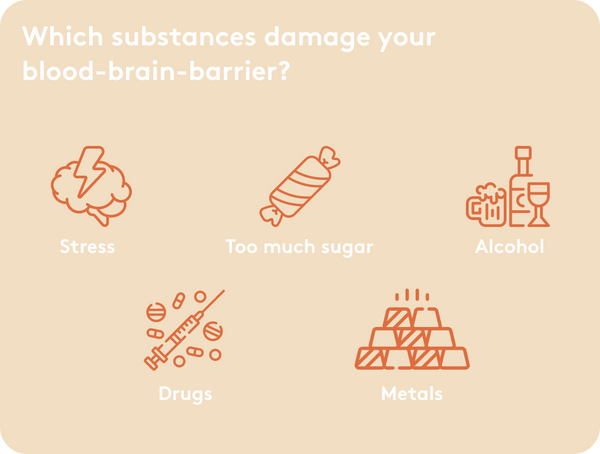
Radiation
Cell phone radiation can also have a negative effect on the blood-brain barrier, making it more permeable to harmful substances [4].
Artificial food additives
Furthermore, artificial additives in food are suspected of causing damage to our brain. However, further research is needed in this area.
There is already evidence on glutamate from experiments with rats, which confirm that the additive affects our blood-brain barrier[5].
Further animal experiments with aspartame show that oxidative stress can develop in the brain due to this substance[6]. Again, further research is needed, so we prefer not to jump to conclusions. For the sake of completeness, we mention it for you.
Metals
Citric acid can bind metals and thus pass through our blood-brain barrier into our brain. Especially in the case of aluminum, a combination with citric acid leads to an increased absorption. That's why you should avoid aluminum pots and dishes[7] and also avoid baking with aluminum foil.
Viruses, Bacteria & Inflammation Viruses and bacteria can also damage the blood-brain barrier, as they may enter our thinking organ piggyback, bound to brain-derived substances. Especially in the case of a more serious course of disease with sepsis (the pathogen enters the blood), caution is called for.
Inflammation and some diseases can also damage our blood-brain barrier and make it more permeable.
Nutrition
Too much carbohydrate, especially table sugar, can damage your blood-brain barrier as well. High blood sugar levels have been linked to inflammation and disturbed hunger-satiety sensations, and can also weaken our memory [8]. Of course, we are talking about increased consumption here, not the recommended consumption of 25 g per day.
Cell phone radiation can also have a negative effect on the blood-brain barrier, making it more permeable to harmful substances [4].
Artificial food additives
Furthermore, artificial additives in food are suspected of causing damage to our brain. However, further research is needed in this area.
There is already evidence on glutamate from experiments with rats, which confirm that the additive affects our blood-brain barrier[5].
Further animal experiments with aspartame show that oxidative stress can develop in the brain due to this substance[6]. Again, further research is needed, so we prefer not to jump to conclusions. For the sake of completeness, we mention it for you.
Metals
Citric acid can bind metals and thus pass through our blood-brain barrier into our brain. Especially in the case of aluminum, a combination with citric acid leads to an increased absorption. That's why you should avoid aluminum pots and dishes[7] and also avoid baking with aluminum foil.
Viruses, Bacteria & Inflammation Viruses and bacteria can also damage the blood-brain barrier, as they may enter our thinking organ piggyback, bound to brain-derived substances. Especially in the case of a more serious course of disease with sepsis (the pathogen enters the blood), caution is called for.
Inflammation and some diseases can also damage our blood-brain barrier and make it more permeable.
Nutrition
Too much carbohydrate, especially table sugar, can damage your blood-brain barrier as well. High blood sugar levels have been linked to inflammation and disturbed hunger-satiety sensations, and can also weaken our memory [8]. Of course, we are talking about increased consumption here, not the recommended consumption of 25 g per day.
The blood-brain barrier as an obstacle for drugs and plant compounds?
As much as our blood-brain barrier benefits our brain, it can be an obstacle when it comes to drugs or plant substances. Dopamine is a good example here:
it cannot cross the blood-brain barrier, but if you take the precursors, they can enter the brain and be converted to dopamine there (https://pubmed.ncbi.nlm.nih.gov/19052127/). This pathway was exploited in drug development. Today, Parkinson's patients receive the precursor of dopamine called L-dopa.
This problem also exists for many plant substances. The main problem here is finding a scientific paper at all that deals with the plant substance. In the case of herbal substances, it is therefore usually questionable whether and how they cross the blood-brain barrier.
it cannot cross the blood-brain barrier, but if you take the precursors, they can enter the brain and be converted to dopamine there (https://pubmed.ncbi.nlm.nih.gov/19052127/). This pathway was exploited in drug development. Today, Parkinson's patients receive the precursor of dopamine called L-dopa.
This problem also exists for many plant substances. The main problem here is finding a scientific paper at all that deals with the plant substance. In the case of herbal substances, it is therefore usually questionable whether and how they cross the blood-brain barrier.
How can you keep your blood-brain barrier healthy?
As with many other health issues, it turns out that a healthy, balanced diet, with fresh, unprocessed and organic foods is also beneficial for the blood-brain barrier and our brain.
Avoiding substances such as alcohol, drugs and nicotine are another factor already commonly known to benefit your health. Getting enough sleep, daily exercise and stress management are also important for the health of your brain.
This can be another reason of many for you to look into your overall health and these simple, but often not so easy to implement tips - one by one.
Avoiding substances such as alcohol, drugs and nicotine are another factor already commonly known to benefit your health. Getting enough sleep, daily exercise and stress management are also important for the health of your brain.
This can be another reason of many for you to look into your overall health and these simple, but often not so easy to implement tips - one by one.


Bibliography
[1]: Sharma, H. S., Muresanu, D., Sharma, A., & Patnaik, R. (2009). Cocaine-induced breakdown of the blood-brain barrier and neurotoxicity. International review of neurobiology, 88, 297–334. https://doi.org/10.1016/S0074-7742(09)88011-2
[2]: Sharma, H. S., & Ali, S. F. (2008). Acute administration of 3,4-methylenedioxymethamphetamine induces profound hyperthermia, blood-brain barrier disruption, brain edema formation, and cell injury. Annals of the New York Academy of Sciences, 1139, 242–258. https://doi.org/10.1196/annals.1432.052
[3]: Lochhead, J. J., McCaffrey, G., Quigley, C. E., Finch, J., DeMarco, K. M., Nametz, N., & Davis, T. P. (2010). Oxidative stress increases blood-brain barrier permeability and induces alterations in occludin during hypoxia-reoxygenation. Journal of cerebral blood flow and metabolism : official journal of the International Society of Cerebral Blood Flow and Metabolism, 30(9), 1625–1636. https://doi.org/10.1038/jcbfm.2010.29
[4]: Tang, J., Zhang, Y., Yang, L., Chen, Q., Tan, L., Zuo, S., Feng, H., Chen, Z., & Zhu, G. (2015). Exposure to 900 MHz electromagnetic fields activates the mkp-1/ERK pathway and causes blood-brain barrier damage and cognitive impairment in rats. Brain research, 1601, 92–101. https://doi.org/10.1016/j.brainres.2015.01.019
[5]: Hermanussen, M., García, A. P., Sunder, M., Voigt, M., Salazar, V., & Tresguerres, J. A. (2006). Obesity, voracity, and short stature: the impact of glutamate on the regulation of appetite. European journal of clinical nutrition, 60(1), 25–31. https://doi.org/10.1038/sj.ejcn.1602263
[6]: Choudhary, A. K., & Pretorius, E. (2017). Revisiting the safety of aspartame. Nutrition reviews, 75(9), 718–730. https://doi.org/10.1093/nutrit/nux035
[7]: Wang L. (2018). Entry and Deposit of Aluminum in the Brain. Advances in experimental medicine and biology, 1091, 39–51. https://doi.org/10.1007/978-981-13-1370-7_3
[8]: Beilharz, J. E., Maniam, J., & Morris, M. J. (2015). Diet-Induced Cognitive Deficits: The Role of Fat and Sugar, Potential Mechanisms and Nutritional Interventions. Nutrients, 7(8), 6719–6738. https://doi.org/10.3390/nu7085307
[9]: Lewitt P. A. (2008). Levodopa for the treatment of Parkinson's disease. The New England journal of medicine, 359(23), 2468–2476. https://doi.org/10.1056/NEJMct0800326
[2]: Sharma, H. S., & Ali, S. F. (2008). Acute administration of 3,4-methylenedioxymethamphetamine induces profound hyperthermia, blood-brain barrier disruption, brain edema formation, and cell injury. Annals of the New York Academy of Sciences, 1139, 242–258. https://doi.org/10.1196/annals.1432.052
[3]: Lochhead, J. J., McCaffrey, G., Quigley, C. E., Finch, J., DeMarco, K. M., Nametz, N., & Davis, T. P. (2010). Oxidative stress increases blood-brain barrier permeability and induces alterations in occludin during hypoxia-reoxygenation. Journal of cerebral blood flow and metabolism : official journal of the International Society of Cerebral Blood Flow and Metabolism, 30(9), 1625–1636. https://doi.org/10.1038/jcbfm.2010.29
[4]: Tang, J., Zhang, Y., Yang, L., Chen, Q., Tan, L., Zuo, S., Feng, H., Chen, Z., & Zhu, G. (2015). Exposure to 900 MHz electromagnetic fields activates the mkp-1/ERK pathway and causes blood-brain barrier damage and cognitive impairment in rats. Brain research, 1601, 92–101. https://doi.org/10.1016/j.brainres.2015.01.019
[5]: Hermanussen, M., García, A. P., Sunder, M., Voigt, M., Salazar, V., & Tresguerres, J. A. (2006). Obesity, voracity, and short stature: the impact of glutamate on the regulation of appetite. European journal of clinical nutrition, 60(1), 25–31. https://doi.org/10.1038/sj.ejcn.1602263
[6]: Choudhary, A. K., & Pretorius, E. (2017). Revisiting the safety of aspartame. Nutrition reviews, 75(9), 718–730. https://doi.org/10.1093/nutrit/nux035
[7]: Wang L. (2018). Entry and Deposit of Aluminum in the Brain. Advances in experimental medicine and biology, 1091, 39–51. https://doi.org/10.1007/978-981-13-1370-7_3
[8]: Beilharz, J. E., Maniam, J., & Morris, M. J. (2015). Diet-Induced Cognitive Deficits: The Role of Fat and Sugar, Potential Mechanisms and Nutritional Interventions. Nutrients, 7(8), 6719–6738. https://doi.org/10.3390/nu7085307
[9]: Lewitt P. A. (2008). Levodopa for the treatment of Parkinson's disease. The New England journal of medicine, 359(23), 2468–2476. https://doi.org/10.1056/NEJMct0800326


